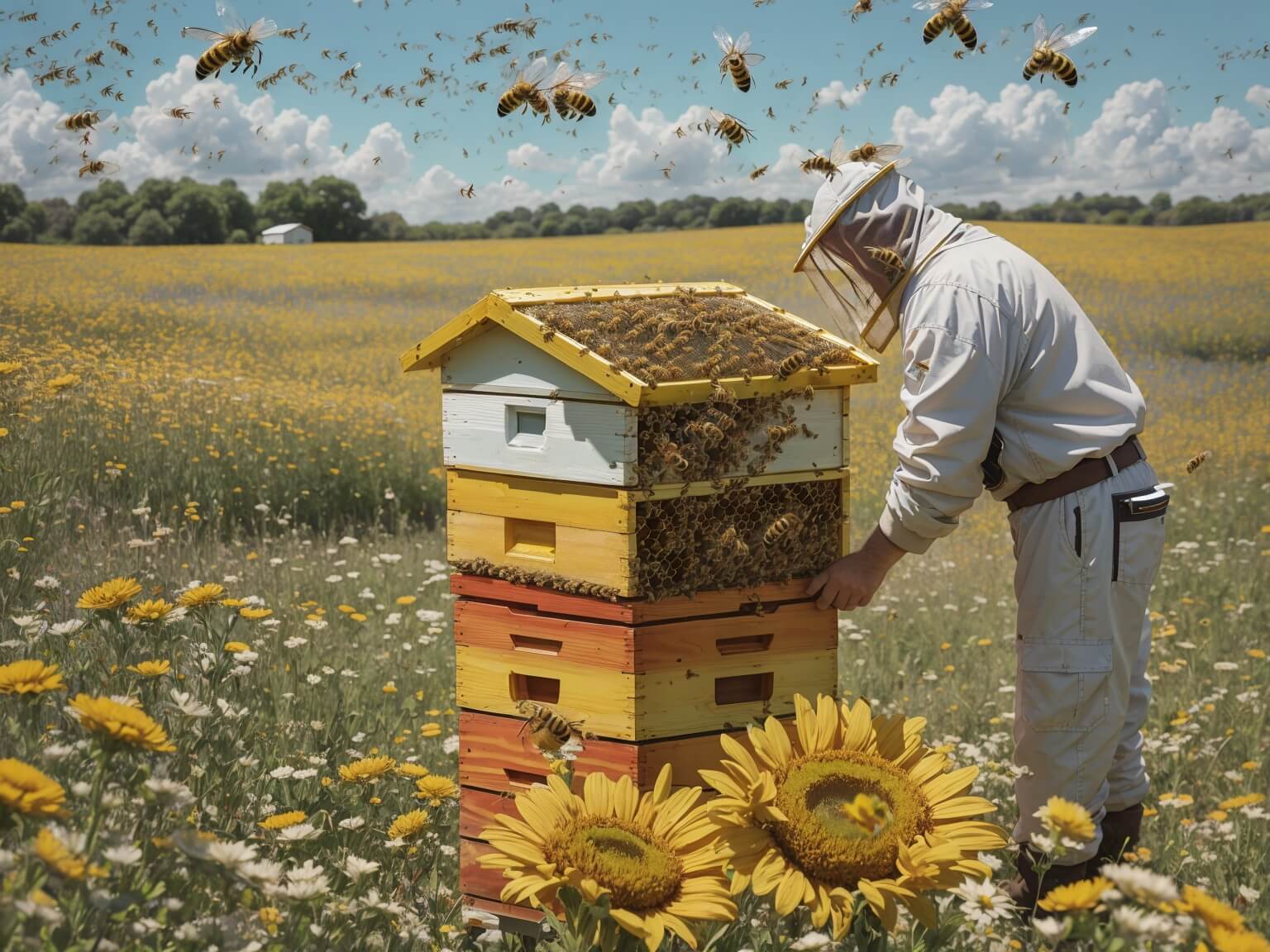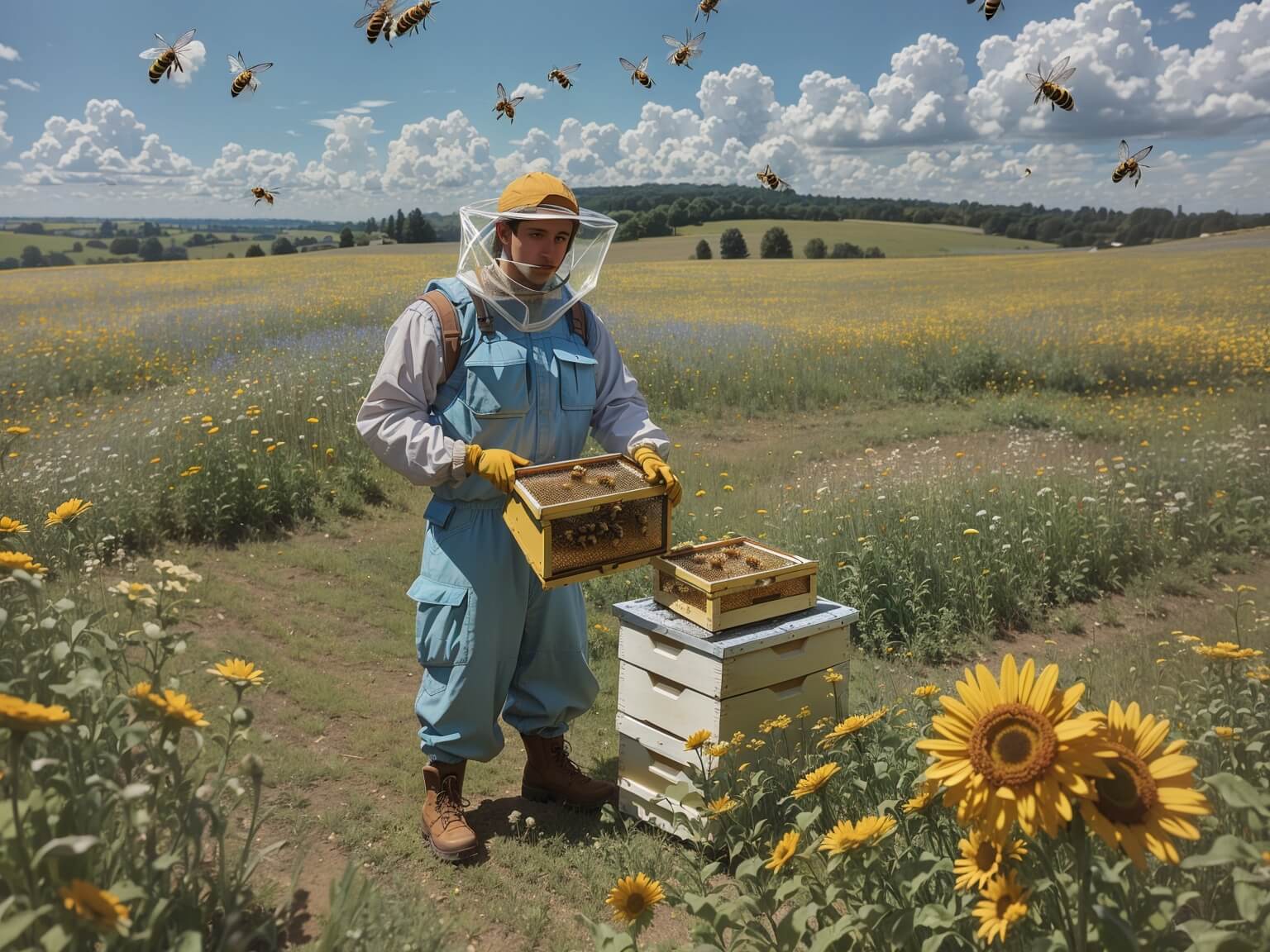As a beekeeper, requeening colonies is a regular task required to maintain healthy and productive hives. While allowing the bees to raise a new queen from existing brood is common, sometimes I’ll introduce a mated queen purchased from a breeder. But queen cells can take weeks to mature and mated queens are expensive, so occasionally I’ve tried adding a virgin queen instead. This quicker and cheaper option can work, but it comes with risks and requires close monitoring. In this article I’ll share my experiences introducing virgin queens to hives and when this approach may or may not make sense.
Queen Cells vs. Virgin Queens
Typically for requeening a hive, I’ll let the bees raise a new queen themselves. By choosing a frame with very young larvae and destroying any existing queen cells, the workers will start new queen cells using the selected grafted larvae. This allows the bees to rear a queen with genetics from their preferred stock.
The downside is waiting for the queen to fully develop, hatch, harden, orient, then take mating flights – essentially a month before she begins laying. And if the queen doesn’t return successfully mated, you’re back to square one.
Introducing an already emerged virgin queen speeds this process along. Presumably she will take mating flights sooner and start laying in under two weeks if accepted. However, directly introducing a virgin does carry risks.

Benefits of Introducing Virgin Queen
In situations where I cannot wait a full month for a new mated queen to start laying, introducing a virgin queen allows me to requeen faster. If I’m doing splits, the sooner I can get queens mated and laying, the better to build up populous hives sooner. Virgins also give me more control over genetics by sourcing from quality breeders.
Cost is a factor too – a laying queen runs $30 or more, while virgin queens typically sell for under $10. When doing many splits, multiple virgin queens makes economic sense. For emergency requeening after losing a failed queen, a virgin gets the colony back on track faster than starting queen cells.
So when timing and economics matter, virgin queens offer an appealing option. But it’s not without risks.
Risk of Rejection or Failure to Mate
Unlike a laying queen pumping out pheromones, a virgin queen may not readily be accepted by the colony. Bees sense she is unproven and lacks reproductive maturity. Without those pheromones, virgins can be attacked, ignored, or cast out completely.
Even if accepted initially, she must successfully take mating flights and return ready to lay within days. Cool, wet weather or lack of drones can foil mating. And she’s vulnerable to predators when out of the hive. It’s no sure bet.
For these reasons, there’s a high chance of queen failure when introducing virgins. I’ve had them not return from mating, disappear, or simply never start laying even if tolerated. You must be prepared for next steps if the virgin doesn’t pan out.
Introduction Methods
To maximize a virgin’s chances of acceptance, it’s best to introduce her gently into a hive already expecting a queen. I confine virgins in a queen cage for a day or two first so bees grow accustomed to her scent. Watch closely for any signs of aggression through the screen.
Making a nuc split with plenty of nurse bees, then adding the caged virgin, helps her odds. The newly queenless split is eager to accept her. Directly releasing a virgin into a large, established hive is riskier – the bees may resent the interloper.
I’ll also remove any existing queen cells first so she faces no competition. Carefully releasing the caged queen after a few days, the familiarity improves acceptance. But it’s still no guarantee.
Mating Flight Needs
Assuming the virgin queen survives introduction without incident, she must still successfully take mating flights within two weeks and return ready to lay. This requires ideal weather, mature drones in the area, and luck in avoiding predators.
If temperatures are too cold, rains keep bees inside, or a dearth means few drones, she may not get properly mated. One bad weather event can foil things. In those cases she either never starts laying or lays only unfertilized drones. Then it’s back to square one requeening again.
Living in a climate with marginal mating conditions for chunks of the year makes introducing virgins riskier. They need a perfect window to become sexually mature and get mated. Timing is everything.
Monitor Queen Cell Destruction
To give the virgin queen her best shot, I’m diligent about destroying any remaining queen cells as soon as I introduce her. This eliminates competition from other new queens that may hatch. A virgin has difficulty asserting control if rival queens emerge in the colony.
For at least two weeks after introducing a virgin, I’ll re-check carefully for any newly started queen cells and eliminate them. If the bees are building emergency cells again, it means the virgin is either failing, rejected, or didn’t return from mating. Removing the queen cells again buys her more time to hopefully succeed.
Finding no new queen cells is a promising sign she’s been accepted. But the real proof of success is finding eggs.
Watch for Fighting/Balled Queens
Sometimes a virgin queen, rather than being ignored, is viciously attacked by the bees. They may surround her in a tight ball and try to kill her. I inspect closely the first days after introduction for fighting or balling behavior. A balled queen unlikely survives the attacking workers.
If I spot them aggressively balling the virgin, I have to intervene and remove the queen to save her life. Why some are targeted for attack versus simply ignored is not fully clear. But reintroducing a balled queen rarely succeeds, so requeening again becomes necessary if that occurs.
Signs of Acceptance
My definitive confirmation that the hive has welcomed the virgin queen is the appearance of eggs in cells a couple weeks after introduction. This proves she succeeded in her mating flights, returned safely, and is now laying. As long as I see consistent brood patterns, the gamble has paid off.
Some beekeepers may report a virgin laying hours after introduction. But in my experience, it takes a minimum of one week after mating before eggs appear. If 2-3 weeks pass post-introduction without eggs, then she likely failed somehow and a backup plan is needed. But once the eggs arrive, celebrate your virgin success!
Be Prepared to Requeen Again
Given all the risks, introducing a virgin queen requires having a backup plan ready. There’s a good possibility she will get rejected, fail to return from mating, fall to predators, or simply never start laying properly. With a mated queen, laying begins predictably a week after introduction. With virgins, it’s a real nail-biter.
Having queen cells already going as a plan B is wise. Watching for emergency cells is good too – if they start building them, your virgin is faltering. Be ready and willing to introduce yet another virgin or purchase a mated queen if version 1.0 doesn’t pan out. Persistence pays off.
When Virgin Queens Work Best
In my experience, virgin queens have the highest chance of success when introduced to small nucs and splits. Their scent is more readily accepted, and less mass of bees means less chance of attack. For hasty requeening of full size hives, mated queen introduction makes more sense.
Virgins are also ideal after capturing swarms. A swarm’s queenlessness means they eagerly and quickly accept a replacement virgin. For planned splits, starting with virgins right away helps the split build quicker. And they can fill emergency gaps if you accidentally lose a queen.
So don’t rule out those inexpensive virgin options. Just be strategic matching their introduction to the right hive scenario.
Can bees accept a virgin queen? Absolutely, when the conditions are ideal. But it is by no means guaranteed, even with proper introduction methods. Virgin queens come with definite risks compared to mated queens. Yet given the lower cost and faster timeline, they remain a useful option for nucs, small splits, swarms, and emergency situations when factors line up right. Just be ready if Plan B becomes necessary! With care and luck, those low-cost virgins can successfully get the colony back to laying status fast.

